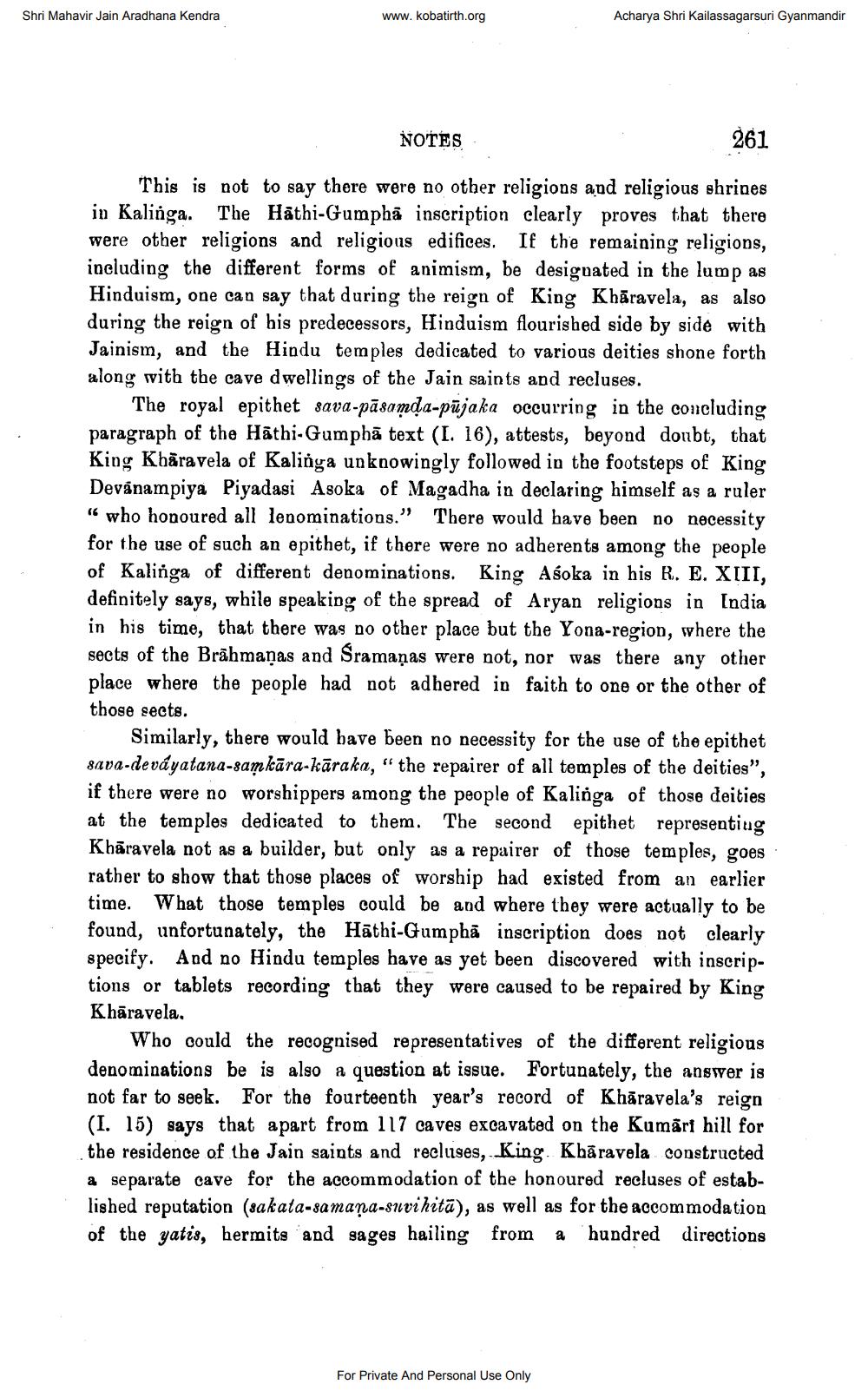________________
Shri Mahavir Jain Aradhana Kendra
www. kobatirth.org
Acharya Shri Kailassagarsuri Gyanmandir
NOTES
261
This is not to say there were no other religions and religious shrines in Kalinga. The Hāthi-Gumphã inscription clearly proves that there were other religions and religious edifices. If the remaining religions, including the different forms of animism, be designated in the lump as Hinduism, one can say that during the reign of King Khāravela, as also during the reign of his predecessors, Hinduism flourished side by side with Jainism, and the Hindu temples dedicated to various deities shone forth along with the cave dwellings of the Jain saints and recluses.
The royal epithet sava-pāsamda-pūjaka occurring in the concluding paragraph of the Hāthi-Gumphā text (I. 16), attests, beyond doubt, that King Khāravela of Kalinga unknowingly followed in the footsteps of King Devanampiya Piyadasi Asoka of Magadha in declaring himself as a ruler “ who honoured all lenominations." There would have been no necessity for the use of such an epithet, if there were no adherents among the people of Kalinga of different denominations. King Asoka in his R. E. XIII, definitely says, while speaking of the spread of Aryan religions in India in his time, that there was no other place but the Yona-region, where the sects of the Brāhmaṇas and Sramaņas were not, nor was there any other place where the people had not adhered in faith to one or the other of those sects.
Similarly, there would have been no necessity for the use of the epithet sava-deváyatana-samkāra-kāraka, "the repairer of all temples of the deities", if there were no worshippers among the people of Kalinga of those deities at the temples dedicated to them. The second epithet representiug Khāravela not as a builder, but only as a repairer of those temples, goes rather to show that those places of worship had existed from an earlier time. What those temples could be and where they were actually to be found, unfortunately, the Hāthi-Gumphā inscription does not clearly specify. And no Hindu temples have as yet been discovered with inscriptions or tablets recording that they were caused to be repaired by King Khāravela.
Who could the recognised representatives of the different religious denominations be is also a question at issue. Fortunately, the answer is not far to seek. For the fourteenth year's record of Khāravela's reign (I. 15) says that apart from 117 caves excavated on the Kumāri hill for the residence of the Jain saints and recluses, King. Kbāravela constructed a separate cave for the accommodation of the honoured recluses of established reputation (sakata-samaņa-suvihita), as well as for the accommodation of the yatis, hermits and sages hailing from a hundred directions
For Private And Personal Use Only




